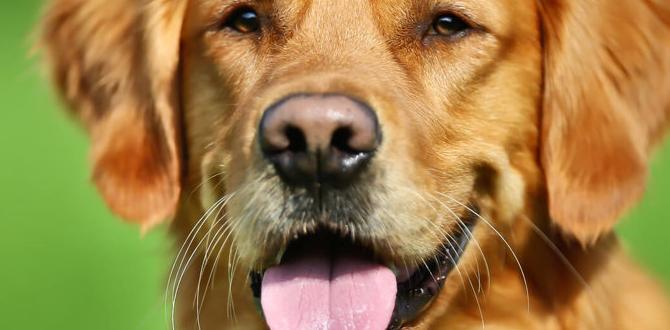Does your dog feel sad when you leave home? You might notice chewed shoes or loud barking. These are signs of separation anxiety. Dogs can get worried when their humans are away. With the right guidance, you can help your furry friend feel better. This separation anxiety in dogs guide will show you how.
Key Takeaways
- Separation anxiety can cause dogs to act out.
- Recognize signs like barking, chewing, or pacing.
- Training helps ease your dog’s anxiety.
- This separation anxiety in dogs guide offers practical solutions.
- Create a safe and comforting space for your dog.
Understanding Separation Anxiety in Dogs
Separation anxiety in dogs is a common issue. Dogs are social animals and love company. When left alone, they might feel abandoned. This can make them anxious and upset. They might bark a lot, chew up furniture, or dig holes. These actions are not just bad behavior. They are signs of stress.
- Dogs need company and love.
- Separation anxiety occurs when left alone.
- Common signs: barking, chewing, pacing.
- It’s a stress response, not bad behavior.
- Understanding your dog’s feelings is key.
Recognizing these signs is the first step to help. You can train your dog to feel safe even when alone. It takes time and patience, but it’s important. Dogs need to know their humans will come back. With this understanding, they can relax more and worry less.
Fun Fact or Stats : 70% of dogs show some form of anxiety.
What Causes Separation Anxiety?
Why do some dogs get anxious when alone? It might start after big changes. Moving to a new house or a new schedule can stress dogs out. Some dogs have always been with humans. If they suddenly have to be alone, it can be hard. Have you ever been in a new school and felt a bit lost? That’s how dogs feel in unfamiliar situations.
Recognizing Early Signs
How do you know if your dog has separation anxiety? Pay attention to their behavior. Do they bark or whine as soon as you leave? Maybe they scratch at doors or windows. Early signs are like little clues that your dog is worried. Catching these early can help you take action sooner. Think of it as a smoke alarm alerting you before a fire gets too big.
Impact on Your Dog’s Health
Separation anxiety can affect your dog’s health. Stress isn’t just a feeling; it can make dogs sick. They might not eat well or may lose weight. In severe cases, anxiety can lead to depression. Imagine feeling scared every time you’re alone. It’s not a nice feeling for dogs either. Ensuring your dog is stress-free keeps them healthy and happy.
Training Techniques for Anxious Dogs
Training can help ease your dog’s anxiety. Start with short departures. Leave for a few minutes and gradually increase the time. This helps your dog learn you will return. Use treats or toys to make leaving a positive experience. Consistency is key. Training should be fun and not stressful for your dog.
- Begin with short departures.
- Gradually increase your time away.
- Use treats to reward calm behavior.
- Consistency helps build trust.
- Make training a fun experience.
Training takes time, but it builds trust. Your dog will learn that you always come back. This reassurance is what they need. Dogs can’t understand words, but they understand actions. Showing them that leaving isn’t forever eases their stress.
Fun Fact or Stats : Dogs trained regularly are 50% less anxious.
Creating a Safe Space
Creating a safe space is important for anxious dogs. This space should be cozy and familiar. Use your dog’s bed or a favorite blanket. Add toys they enjoy. Think about your own favorite spot at home. Isn’t it comforting to have a place to relax? Dogs feel the same way. A safe space gives them security when you’re gone.
Using Positivity in Training
Positive reinforcement is key in training. Reward your dog when they behave well. Use treats, praise, or playtime. Dogs respond well to positivity. Their tails wag, and they look happy. Have you ever gotten a reward for doing something good? Feels great, doesn’t it? Dogs love that feeling too. It encourages them to repeat good behavior.
Consistency is Key
Consistent routines help anxious dogs. Feed them at the same times daily. Walk them at similar times too. Dogs thrive on routine. It gives them a sense of stability. Imagine if every day was different. It would be confusing, right? Dogs feel comfort in knowing what to expect next. A consistent schedule helps reduce their anxiety.
Best Tools for Managing Anxiety
Many tools can help manage your dog’s anxiety. Calming collars release scents that relax dogs. Some dog shirts apply gentle pressure to soothe them. Puzzle toys can distract your dog when you leave. Music specifically for dogs can also be calming. These tools are like a warm blanket on a cold day. They provide comfort and ease stress.
- Calming collars release relaxing scents.
- Dog shirts apply soothing pressure.
- Puzzle toys keep them entertained.
- Music can calm anxious dogs.
- Tools help provide comfort and ease.
These tools are not magic fixes. They work best alongside training. Your dog’s anxiety might not disappear immediately. Patience and consistency are vital. Combining tools with training makes a powerful solution. Your dog will feel more relaxed and happy.
Fun Fact or Stats : 80% of dogs respond well to calming collars.
Choosing the Right Tools
Choosing the right tools is important. Each dog is different. What works for one may not work for another. Observe your dog’s reactions. Does the collar make them calm? Does a certain toy keep them busy? Testing a few options helps find the best fit. Imagine trying on shoes. Not every pair is comfortable, right? The same goes for your dog and these tools.
The Role of Toys and Games
Toys and games play a big role in reducing anxiety. They provide fun and distraction. Choose toys your dog loves. Rotate them to keep things exciting. Games also strengthen your bond. Have you ever played a game that made you forget your worries? Toys do the same for dogs. They focus on fun instead of fear.
Music for Dogs
Music can soothe anxious dogs. Some tunes are specifically made for them. These are usually slow and calming. Play music when you leave home. It keeps your dog company. Think of it as a lullaby that helps them relax. Have you ever heard a song that made you feel calm? Music does the same for dogs. It’s a simple yet effective tool.
Diet and Exercise for Anxious Dogs
Diet and exercise are important for anxious dogs. A balanced diet keeps them healthy. Foods rich in Omega-3 can help reduce stress. Regular exercise helps burn off extra energy. Walks, runs, or playtime are great options. Exercise releases happy hormones. They make your dog feel good and less anxious. It’s like us feeling great after a good workout.
- A balanced diet keeps dogs healthy.
- Omega-3 helps reduce stress.
- Exercise burns off extra energy.
- Walks or runs are good exercises.
- Exercise releases happy hormones.
Keeping your dog active is crucial. It’s not just about physical health. Exercise helps mental well-being too. A tired dog is a happy dog. They rest better and feel less anxious. A good diet and regular exercise work together. They make a powerful duo for reducing anxiety.
Fun Fact or Stats : Dogs need at least 30 minutes of exercise daily.
Foods That Help Reduce Anxiety
Did you know some foods reduce anxiety? Foods like fish, rich in Omega-3, are great. They can help calm your dog. Even some veggies can help. Carrots and sweet potatoes provide nutrients that ease stress. Have you ever felt better after a healthy meal? Foods do the same for dogs. They help keep anxiety at bay and promote health.
Importance of Regular Exercise
Exercise is crucial for anxious dogs. It burns energy and helps them relax. Dogs love walking, running, or playing fetch. Exercise releases endorphins, the happy hormones. It’s like our runner’s high. Regular activities also tire them out. A tired dog has less energy for worry. It’s like reading a book and then feeling sleepy. Exercise helps calm anxious minds.
Combining Diet and Activity
A good diet and activity work together. They keep your dog both healthy and happy. Balanced meals provide the energy they need. Exercise uses up that energy, reducing stress. Imagine balancing on a seesaw. Both sides need to be even. Diet and exercise create that balance for dogs. They lead to a happier, calmer life.
Professional Help for Severe Cases
Sometimes, you need professional help. Severe cases of anxiety might require it. Dog trainers or behaviorists can offer solutions. They have the skills to handle tough cases. Vets can also provide guidance or medication. It’s okay to seek help. We all need support sometimes. Professionals give your dog the best chance to overcome anxiety.
- Seek help for severe anxiety cases.
- Professional trainers offer solutions.
- Vets can provide guidance or medication.
- It’s okay to ask for help.
- Professionals support better anxiety management.
Professional help is a great resource. They understand dogs deeply. Their guidance can be invaluable. Severe anxiety is hard to handle alone. Reaching out for help is wise and caring. It shows you want the best for your dog. Together, you can help your dog feel secure and happy.
Fun Fact or Stats : 60% of owners seek professional help for dog anxiety.
When to Seek Professional Help
How do you know when it’s time for professional help? If your dog’s anxiety disrupts daily life, it might be time. Are they harming themselves or others? Is training not working? These are signs to seek assistance. Think of it like needing a tutor for a tough subject. Sometimes, expert help makes all the difference.
What Professionals Offer
Professionals offer guidance and solutions. They understand dog behavior deeply. Trainers teach methods tailored to your dog. Vets might suggest medications. Behaviorists analyze and plan treatment. Their expertise can help ease your dog’s anxiety. Just like a doctor helps us when we’re sick, professionals assist anxious dogs.
Combining Professional and Home Strategies
Professional and home strategies work well together. Follow expert advice at home. Combine it with your training. Use tools or changes they suggest. Your dog benefits from both. It’s like teamwork. You, your dog, and the professional become a team. Together, you make a powerful plan to reduce anxiety.
| Tool | Purpose | Effectiveness | Example |
|---|---|---|---|
| Calming Collar | Releases soothing scents | High | Lavender Collar |
| Dog Shirt | Applies gentle pressure | Medium | ThunderShirt |
| Puzzle Toys | Provides distraction | High | Interactive Ball |
| Music | Calms anxiety | Medium | Dog Music Playlist |
Conclusion
Separation anxiety is hard for dogs. This separation anxiety in dogs guide helps you understand and help. Recognize the signs and train your dog. Use tools and create a safe space. Professional help is there if needed. Together, these steps make life better for your furry friend. Remember, patience and love are key.
FAQs
Question: How can I tell if my dog has separation anxiety?
Answer: Look for signs like barking, chewing, or pacing when left alone. If your dog acts distressed when you leave, it might be anxiety. This separation anxiety in dogs guide can help you identify and understand these behaviors better.
Question: Can all dogs get separation anxiety?
Answer: Yes, any dog can develop separation anxiety, but some are more prone. Factors include breed, past experiences, and changes in their environment. Understanding your dog’s unique needs can help manage anxiety effectively.
Question: What are some natural remedies for reducing anxiety?
Answer: Natural remedies include calming collars, music, and exercise. Foods high in Omega-3 can also help. Implementing a consistent routine and a safe space are beneficial. This separation anxiety in dogs guide offers more detailed solutions.
Question: Is professional help necessary for all cases?
Answer: Not all cases need professional help. Mild anxiety might be managed with training and tools. However, severe cases could benefit from expert guidance. This guide outlines when to seek professional intervention.
Question: How long does it take to reduce separation anxiety?
Answer: Reducing separation anxiety varies for each dog. Consistent training can show progress in a few weeks. Severe cases may take longer. Patience and persistence are key. Using this separation anxiety in dogs guide can aid in the process.
Question: Can toys really help manage anxiety?
Answer: Yes, toys provide distraction and mental stimulation, reducing anxiety. Puzzle toys, in particular, engage your dog’s mind. They keep dogs occupied, easing stress. Combining toys with other calming techniques can enhance their effectiveness.
Meet Elyse Colburn, the devoted canine companion and storyteller behind the enchanting world of “Tales, Tails, and Adventures Unleashed.” A passionate dog enthusiast with a heart full of paw prints, Elyse Colburn shares heartwarming tales and insightful adventures, celebrating the joy, loyalty, and endless antics that make every dog a true hero. Join Elyse Colburn on this tail-wagging journey, where every post is a love letter to our four-legged friends.








